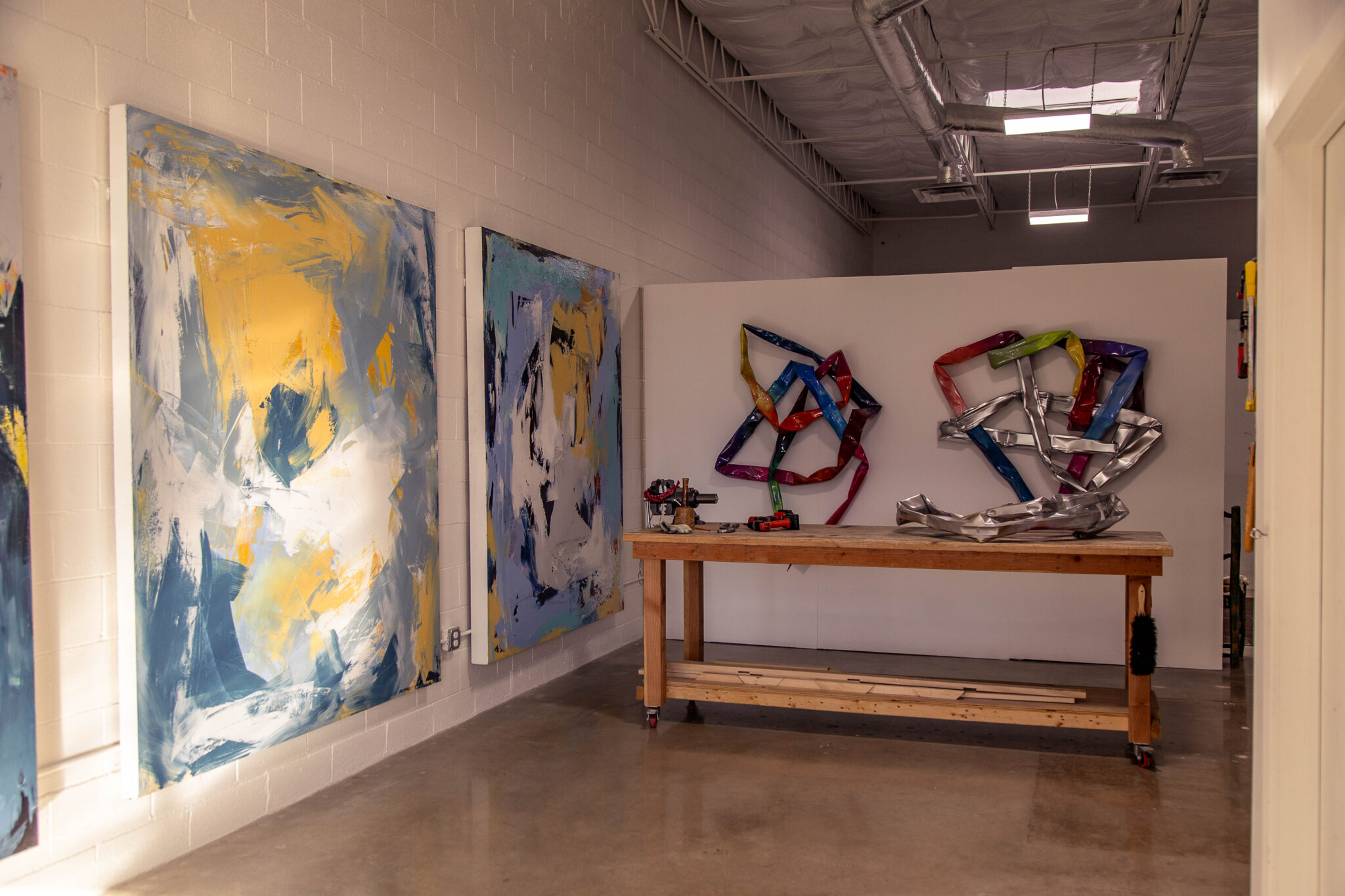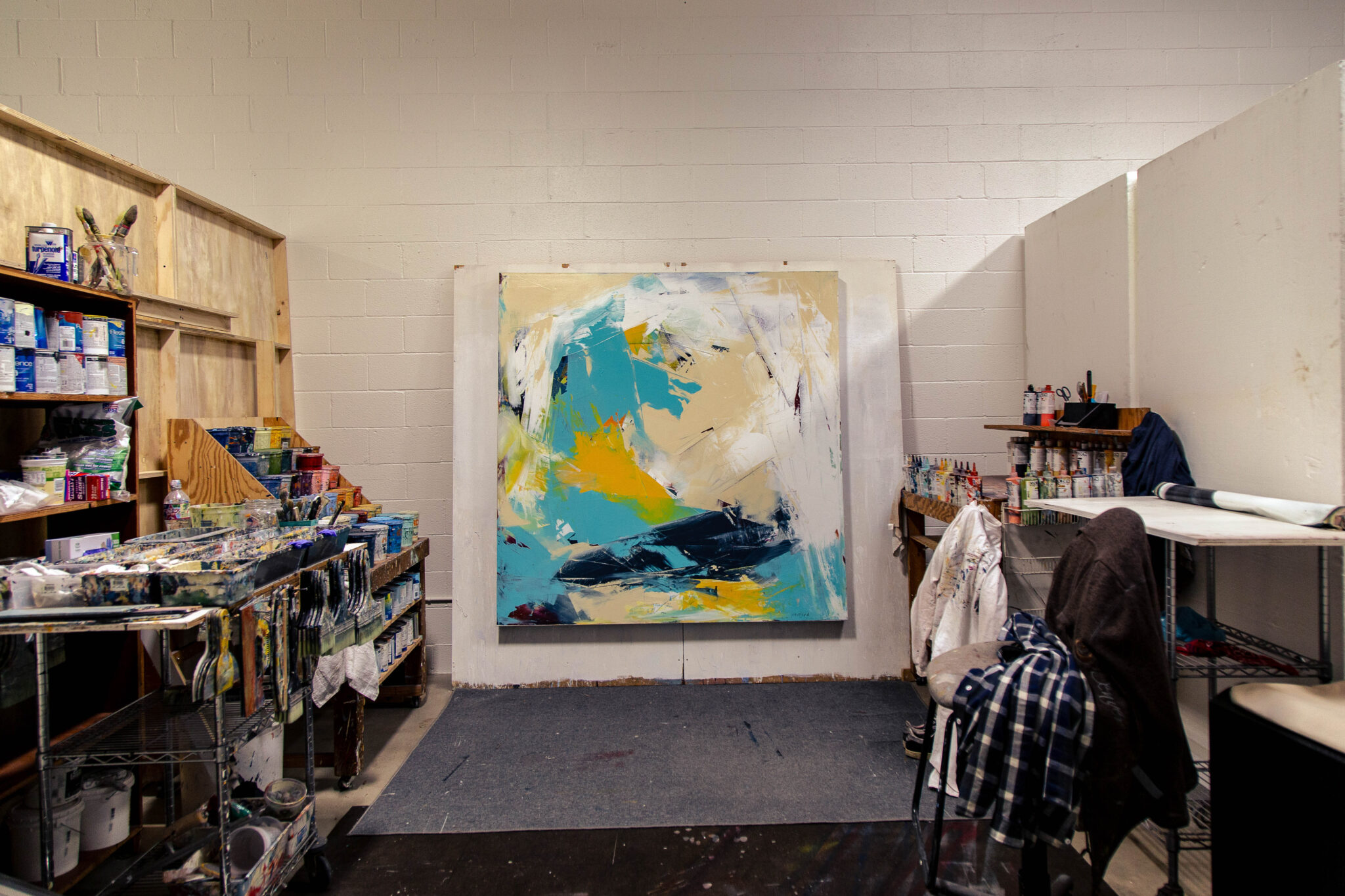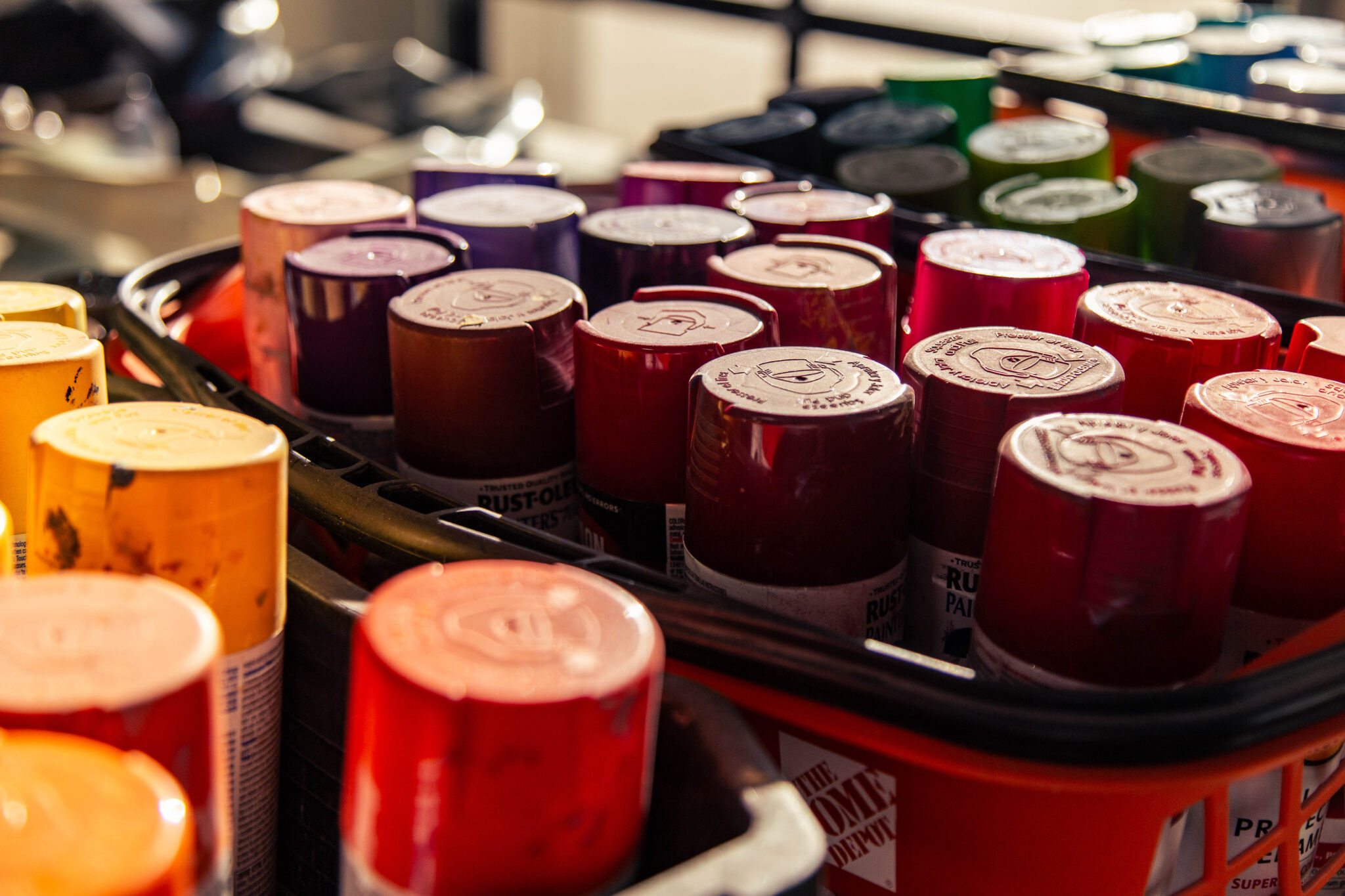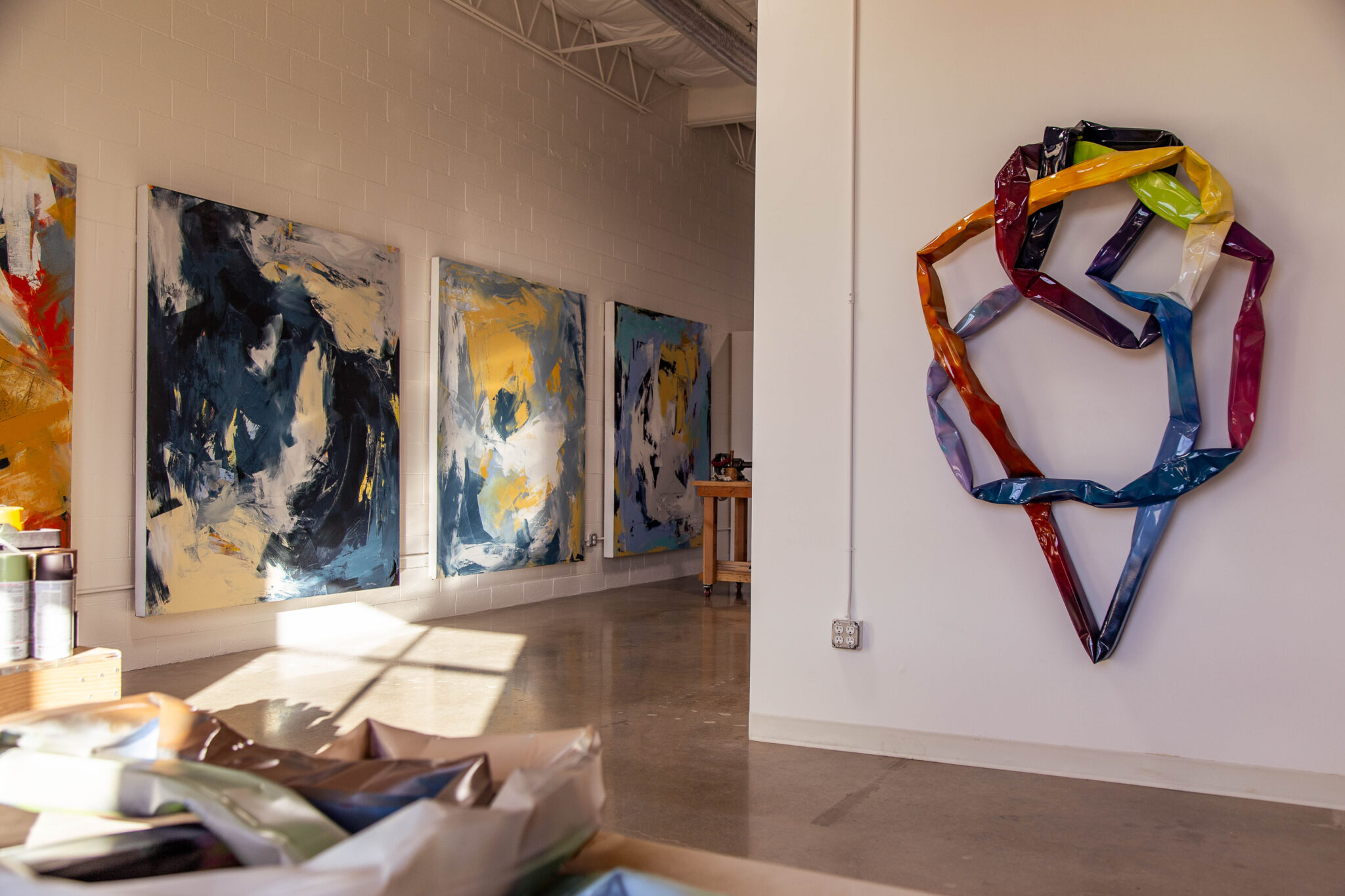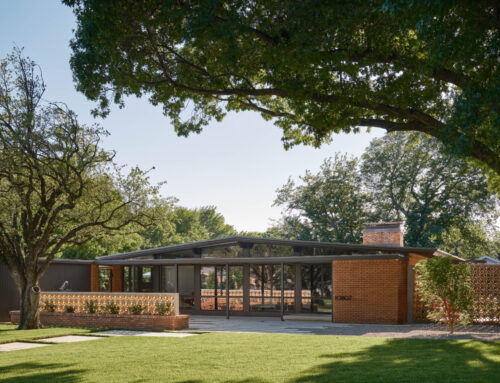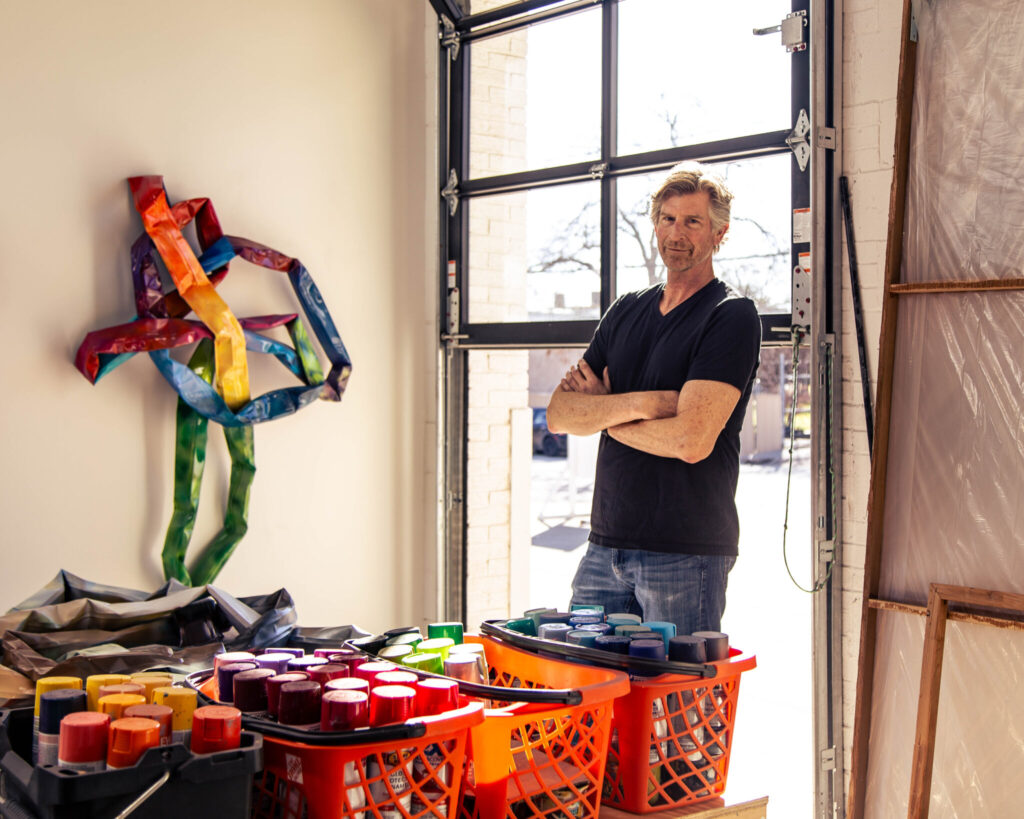
Photography by Yuvie Styles
“We see these images on television, but never just in your backyard.”
Nearly everyone remembers where they were when a tornado touched down in Dallas on October 20, 2019.
For Tom Hoitsma, he was with his family at his Preston Hollow house. During that night, they lost power and lit candles while acoustically singing, thinking the storm was mild.
It wasn’t.
The tornado stole homes, trees and even schools, leaving a path of chaos.
The next morning during his ritual morning walks, Hoitsma and his 12-year-old daughter braved the debris to walk around their neighborhood.
“Everything was pin quiet,” Hoitsma says. “It was so eerie, there was not a bird. There was not a squirrel. There was nothing. It was a dead zone. It was completely quiet.”
They saw a couple outside their completely destroyed home, where they had sheltered against the storm, surviving despite the odds. That day, he collected debris from the storm, paying attention to the look of sharp metal wrapped around each other.
“There’s a strange beauty to [natural disasters],” Hoitsma says. “When you see a sunrise coming up over the water, and there’s all this flood of metal and boats turned upside down,” Hoitsma says. “There’s this sort of sculptural beauty to it.”
For a year, the collected debris sat in his studio, unsure of its purpose. Then, he envisioned a sculpture series.
Hoitsma’s art career spans his entire life. Before he found an ‘aha moment’ for a sculpture series idea with the pliable aluminum debris, he was creating large-format gestural abstract paintings.
“Sculpture was always my first love, but sculpture is hard to make,” Hoitsma says. “I also was told by a gallerist, ‘If you want to starve, make sculpture.’”
Inspired by the resilience seen in his neighbors’ survival, Hoitsma began creating metal sculptures. The twisted metal could be a play on the perfect metaphor, he says.
The hunt began to find more supplies to make something he could have more control over. He connected with someone in Deep Ellum who makes customized material from rain gutters, similar to what he saw that morning.
“The process sort of drove the early images, the early sculptures, just trying to figure out how to do it,” Hoitsma says. “The more I did them and made them, the more I failed. I brought the first one [to a gallery] and I was so very excited about it. It was just a mess. It was a total mess. I don’t know why I was just so excited. I thought this is so cool. I mean, this is the coolest,” he says.
It was important to him when molding the pieces for it not to have points. It needed to be all connected like an Escher drawing.
“It’s all related to this idea of the resiliency of the human spirit and how to articulate that visually,” Hoitsma says.
Over two years, he produced about two sculptures per month, totaling nearly 50, with 14 in inventory, working on commissions for local designers and homeowners.
“I tell everybody, I make house jewelry,” Hoitsma jokes. “It’s no more complicated than that. I’m not making a statement. I’m not solving the world’s problems. It’s supposed to light up a room, it’s supposed to bring you joy. And if it doesn’t do that, I’ve failed.”
Last fall, Hoitsma got the keys to his new studio showroom in the Design District and on Mar. 7, he had an official opening. It’s a trinity of somewhere to hang his art, have a working area and in the back, a rehearsal space for his musical instruments for his ‘80s cover band.
“You’ve got to make this stuff for yourself,” Hoitsma says. “If you’re trying to make something for an audience you’re going to be exhausted, and, well, you’re going to fail. Here’s the thing: They don’t know what they want until I give it to them.”


